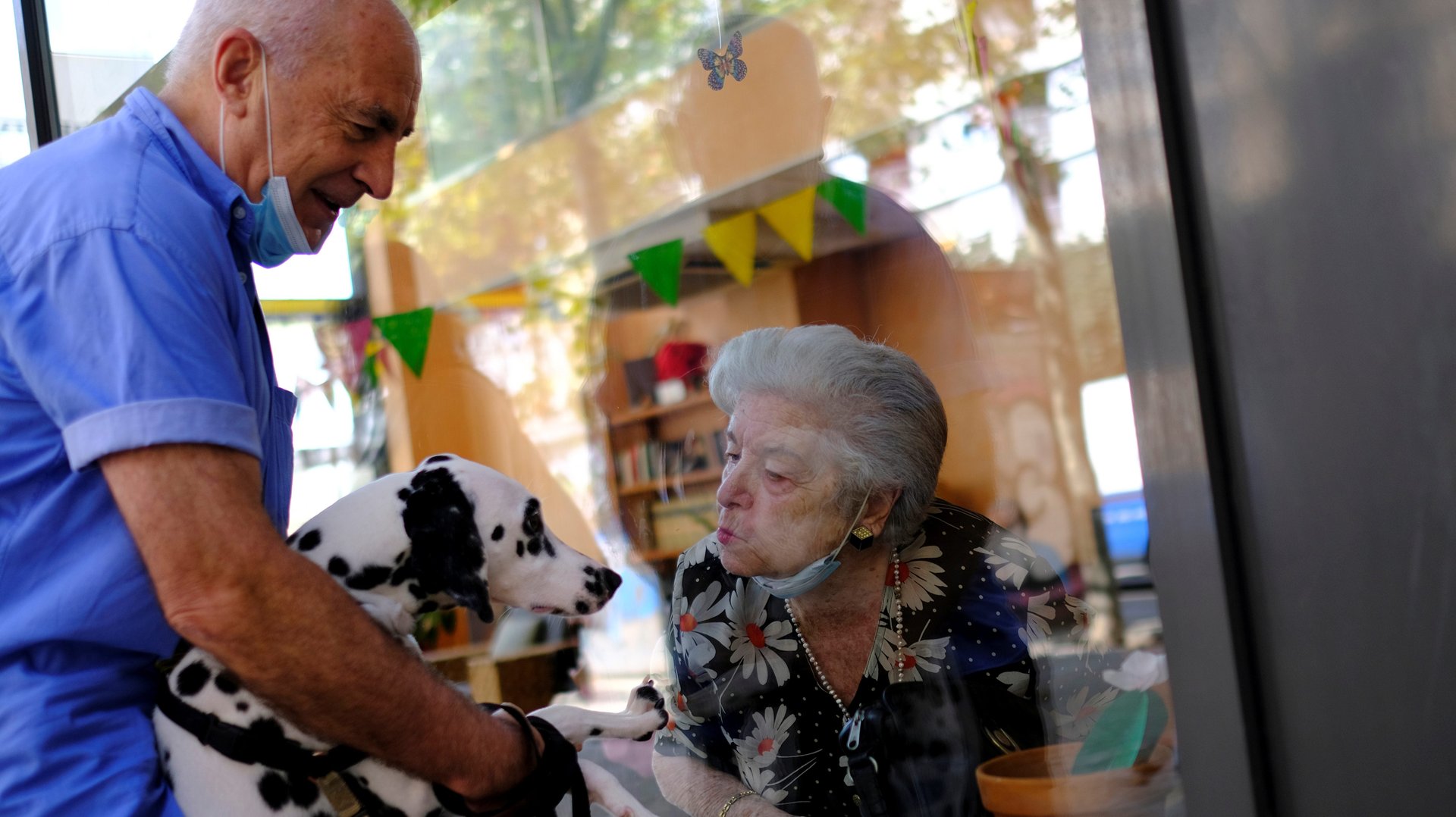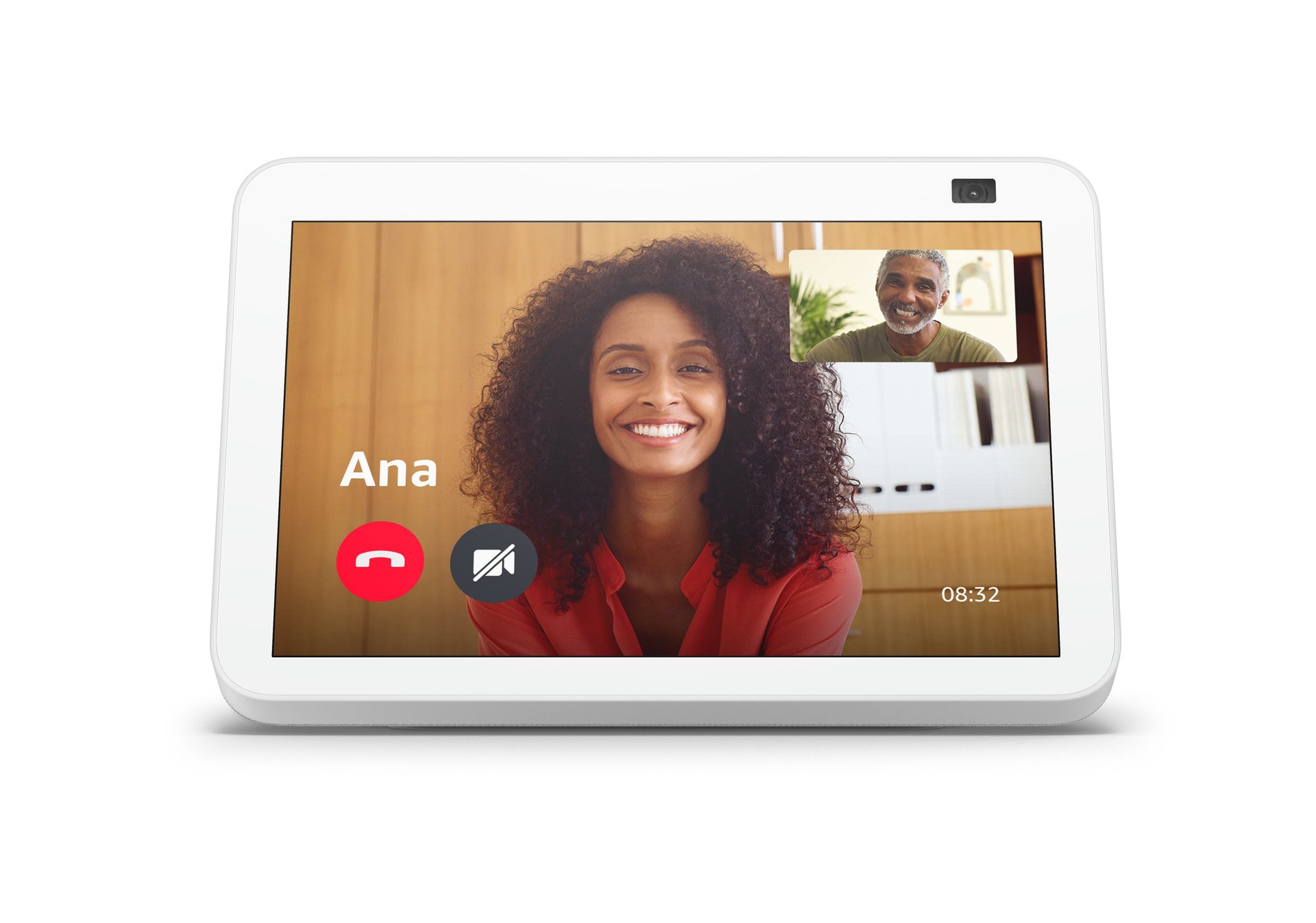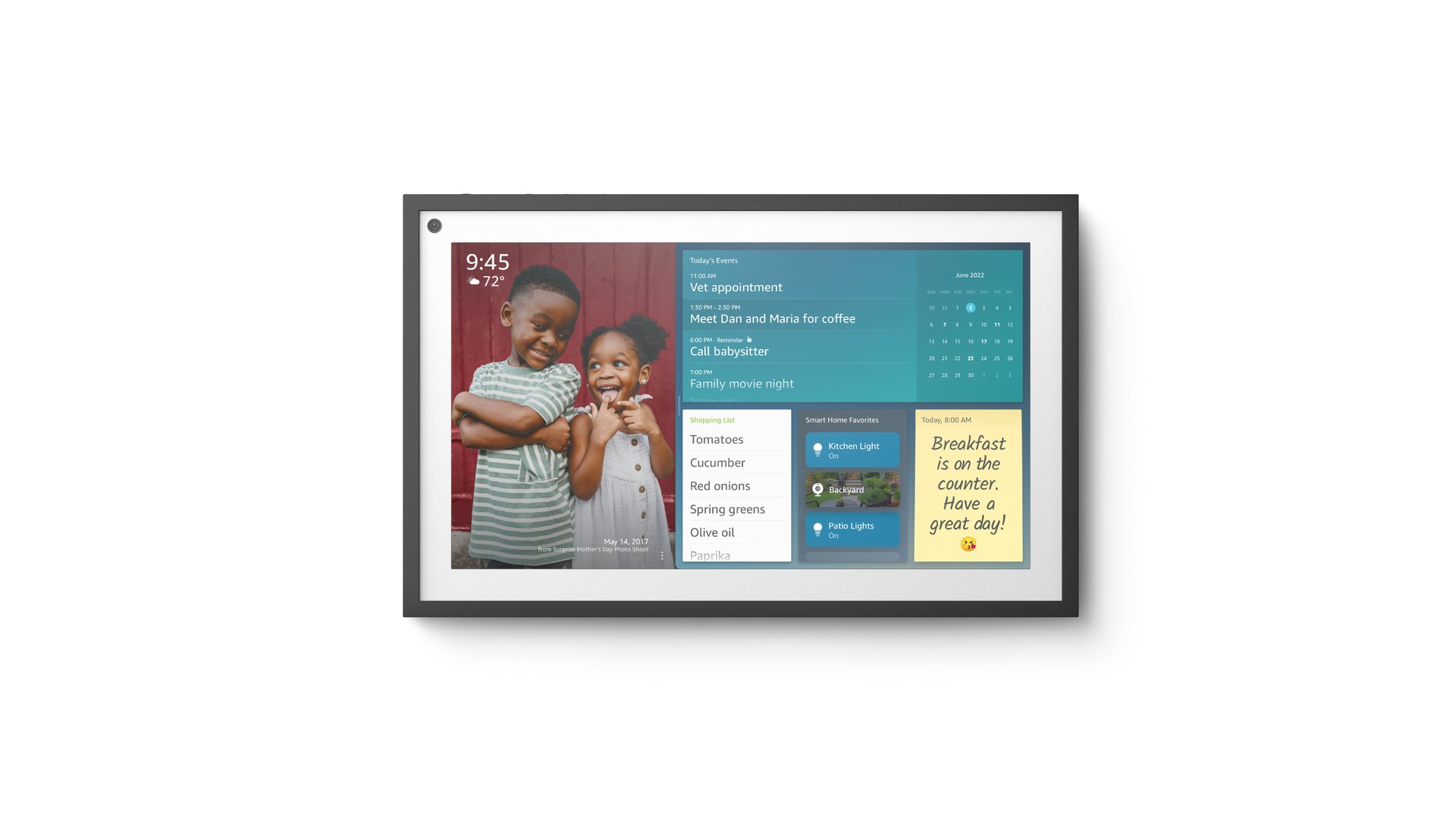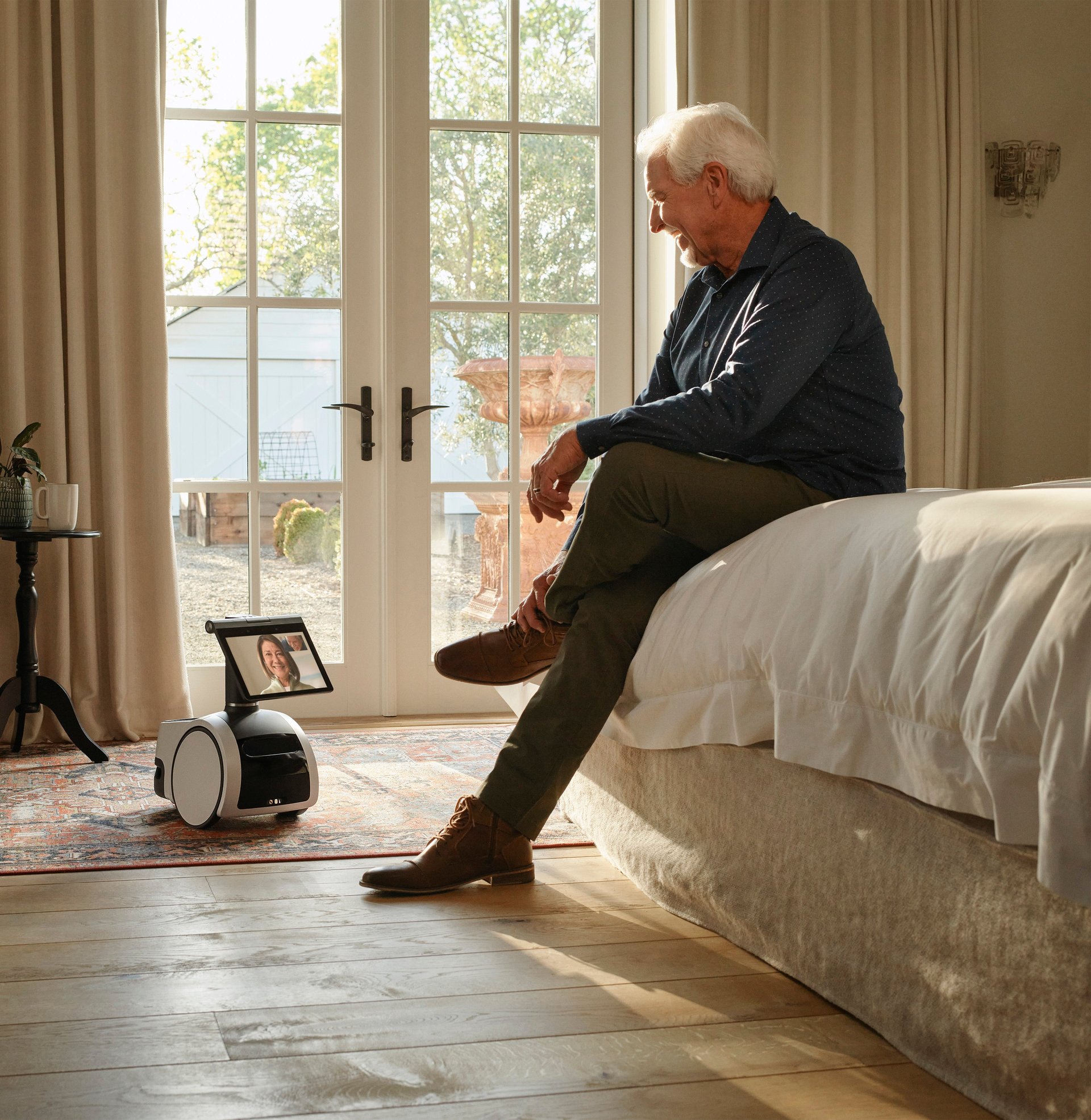Why the Amazon Echo Show should be standard in every nursing home
Like many people, I could not visit my parents for most of 2020 and a large part of 2021. They had moved from one retirement home into another during the last week such places were open, the week before Covid-19 lockdowns began.


Like many people, I could not visit my parents for most of 2020 and a large part of 2021. They had moved from one retirement home into another during the last week such places were open, the week before Covid-19 lockdowns began.
Pandemic restrictions kept my parents and their fellow residents, and millions of others globally, locked indoors for months without outside visitors. Much of that time was spent in their rooms alone, seeing staff for basic care, temperature checks, and food drop-offs whenever the building was coping with an outbreak. And outbreaks happened repeatedly. One two-week isolation period would roll into another when a new case developed, resetting the countdown clock. Though I could see how there were few other options, my heart still broke for my parents, quarantined and separated from each other, eating solo meals, and spending long days alone.
However, my sorrow was somewhat tempered with the help of technology. My sister and I had used some of our last pre-pandemic visit with our parents to set up Amazon Echo Shows in each of their new rooms. I had been using an Echo to help close the gap between New York, where I live, and Ontario, Canada, where they are, for a few years. Since the pandemic began, however, the Echo Show has been more than a convenient way to check in with them or say goodnight. It has allowed me to track their moods and any visible changes in their health, and to lift their spirits with music, or with TV shows that we could watch together if I pointed my Echo at my laptop screen.
Plenty of families kept in touch over Zoom and FaceTime calls as the pandemic continued. But to contact people who aren’t comfortable with computers or smartphones, have mobility issues, or some form of cognitive decline like dementia (which is the case for my parents), video calls usually required a third person to manage the software, hold the iPad, or grab the phone when it rang. Virtual visits had to be scheduled and were often limited to once or twice a week for 30 minutes.
Echo Shows, however, have a “drop-in” function that can, in a sense, teleport me into my parents’ room without needing them to fiddle with the technology or without even asking them to physically move closer to the machine. For my pandemic virtual visits, I didn’t have to bother overworked caregivers and ask them to spend 30 minutes hovering over someone who could make them sick or whom they could sicken. Nor did I have to wait for days to see them and watch the clock as we spoke.
If I appreciated the Echo Shows before Covid, I now believe the devices—or any similar technology with that same drop-in feature—belong inside every retirement and nursing home. Like telephones, they ought to be ubiquitous.
The case for equipping seniors’ homes with cameras
I understand how that kind of endorsement of AI-enabled technology owned by one of the world’s most powerful, omnipresent companies might not sit comfortably with everyone. My husband, like most people I know, finds Echo Shows, or any other always-listening device, to be “creepy.” Fortunately, you don’t have to own an Echo Show to talk to one; there’s also a phone app. Users also decide who has “drop-in” privileges. Still, cameras and smart devices are famously relatively easy to hack, and this technology is far from innocuous.
But anyone in my position would understand why I accept this arrangement: I feed personal info to a data-gobbling tech giant that wants to sell me things and in exchange, I get this fairly seamless gateway into my parents’ lives. I see it as a variation on what we all do every day with our phones and laptops. And when you’re aware of how lonely your elderly parents can become and what that loneliness does to their physical and mental health, their memory, and general quality of life, you decide to trust pledges about privacy and data anonymization.
Amazon has taken the lead with products created for an aging population
Amazon is banking on similar perhaps begrudging acceptance from customers as populations age in developed countries. This week it announced a new suite of products, a few of which were designed, to various degrees, with aging seniors in mind. The new Alexa Together eldercare subscription service, for example, allows seniors to contact emergency services through their Alexa devices at home, making it an update on established medical alert systems. But it’s also set up so that family and other loved ones can track a person’s activities during the day, with their permission, and cue reminders for medications, remotely.
The Echo Show, meanwhile, will soon be available with a 15-inch screen (for $250) that you can mount on a wall. It will have picture-in-picture capabilities and can double as a television, creating a kind of entertainment hub crossed with a wall calendar and digital photo frame.


Stealing the spotlight, however, was the Astro, an entry-level “household robot” that is being likened to an Echo Show riding a Roomba. To some, that sounds ridiculous and too invasive. The robot’s design undoubtedly falls flat (and apparently early adopters will need to be patient, according to Vice), but my guess is Amazon wasn’t looking to compete with Apple or Samsung for choosy younger millennial buyers in this case.
The Amazon Astro household robot could be useful for senior care, too
Among the customers who might appreciate the Astro are people who currently wish they could be a few places at once—parents watching kids at home during the workday, for example, or busy adults with a parent who lives alone across town, on the other coast, or overseas. (The Astro can be set to recognize household occupants and then patrol the house like a terrier, alerting owners about strangers, which raises new privacy questions, to be sure.)

It’s easy to imagine how the Astro, which will sell for $1,000 to $1,450 later this year, and the Alexa Together service would work in tandem to help older people achieve what they care about most: avoiding institutions for as long as possible. Many seniors don’t need 24-hour care, but their memory may be slipping enough or their gait so unsteady that their children or friends will find themselves looking for ways to keep tabs on them from a distance. There’s only so much a single device in the kitchen or bedroom can do. Plus a robot doesn’t have to sleep.
These new products emphasize physical safety more than virtual companionship, but they will offer both. The timing is right: the pandemic has shown us the value of digital products that most closely replicate in-person visits. I find the minimalism of the Echo Show compared to a Zoom call or other software makes it far less draining for daily use. The sense of being in the same room is so real to my mother that she will try to pass me things like magazines or banana bread through the screen. She laughs at herself when I remind her that it’s a computer, not a window.
The case for equipping seniors’ homes with cameras
Scheduled visits at actual windows became commonplace for older people in care facilities in 2020. But inside, the buildings were quiet.
Data from Safegraph, which collects anonymous cell phone activity to measure things like foot traffic to businesses, show that compared to early January 2020, total visits to nursing and assisted living homes across the US was significantly lower during the first year of the pandemic.
The reduction in visitors was even more dramatic at facilities in counties close to urban centers. Each line below is foot traffic to nursing homes and assisted living facilities in the US’s most populated 35 counties. These countries represent a quarter of the US population. While the national average never fell more than 34% from January levels, many of the largest counties saw visits drop more than 50%.
By the April 2021, the vast majority of seniors and many people in the general population were vaccinated and visits to retirement and nursing homes rebounded. However, with the Delta variant still spreading, and because breakthrough cases are most dangerous to the elderly and immunocompromised, lockdowns have not entirely ended for many nursing homes.
For that reason, I still tell people about Echo Shows if they have family in congregate living situations or single parents living alone at home. I explain how the drop-in feature works both ways: The video isn’t clear right away, giving users, including professional caregivers, time to hang up or turn off their camera, if it’s not a good time for a video call. I walk people through their options for configuring a device and how to talk to the staff at a retirement home so that they’ll know the camera is not there to surveil—and thereby demoralize—workers. The Echo is not hidden, it doesn’t record anything, and its chimes make it extremely obvious when a call is arriving.
Using it has allowed my sister and me to become friendlier with the staff caring for our parents. There was one case early in the pandemic when I chose to complain about an otherwise wonderful caregiver whom I twice saw not wearing a mask. It turned out this person didn’t entirely believe that Covid was real. I would not have known any of this without Echo.
The more typical fear for families was that their loved ones would be neglected in the pandemic, a reasonable consideration given the unprecedented situation, staffing shortages, and the rare but disturbing stories surfacing of residents left to fend for themselves, and people dying of hunger or dehydration, in addition to Covid-19.
Even in the best of times, families provide a critical layer of oversight (and extra help with personal grooming and housekeeping) within nursing homes. That was partly why a few advocacy groups, like Families for Better Care, in Austin, Texas, raised money to send dozens of Echos to families in need.
“We were toying around with the idea and looking at different devices because we were thinking that this is probably going to mushroom into a much larger lockdown,” says Brian Lee, executive director. His team settled on the Echo Show because of its “drop-in” feature, and he says families wrote to him to say it has been a lifeline, mostly to maintain a connection that was richer than a phone call.
Leaving someone with not enough contact was no small risk. During the pandemic, “social isolation” was named as a cause of death among seniors in Minnesota, and “failure to thrive” became the euphemism in other places.
Technology will keep us connected, in good times and bad
Having easy video access to my parents through the worst part of the pandemic was an admittedly mixed blessing, giving me a front-row seat to their sadness and frustration, but also to moments of levity.
I was online often when a wave of Covid swept through their memory care unit. When my mother tested positive, I learned about it from an on-site nurse who crouched down close to the Echo one evening to share the information as gently as possible. Then my father tested positive, too, and I watched anxiously on and off for days as they separately reached points in the disease when they stopped eating and could only sleep, and it wasn’t clear whether recovery or hospice care would come next.
I was also able to log on one afternoon just a few weeks later when I knew they would be getting their first vaccination shots. They were reunited by this time and allowed to quarantine together when the public health nurses arrived in full PPE regalia. As my mother and father, now recovered from the virus, got their first doses of the vaccine, I kept talking, telling them that they had nothing to fear from the lovely people under all that plastic.
My guess is that most people would want to have the same privilege, particularly those who come from cultures that still value intergenerational living arrangements but don’t have the right living space or the types of jobs that make it feasible.
Amazon is getting out ahead of other mainstream tech companies by paying attention to the many millions of people who caregiving for an adult in some way. Even before the deadly coronavirus arrived at a senior living facility in Washington state, marking a major inflection point in the pandemic for Americans, more seniors homes were introducing Alexa technology into their suites. The mission was not humanitarian, but rather part of a push at Amazon to embed Alexa technology into all kinds of real estate.
“With Alexa Smart Properties, we are providing Alexa experiences at scale in properties such as hotels, vacation rentals, apartments, senior living, and more,” Nicolas Maynard, senior manager of Alexa for Everyone at Amazon told me via email. “We continue to hear from some of the largest senior living providers in the US that integrations like these would be useful for their communities.”

The flood of AI tools ready to inundate our lives will deserve scrutiny and public attention. Determining how and when technology can appropriately assist seniors—and others who need monitoring—when the caregiving sector as a whole faces chronic and severe labor crunches is going to be an ongoing discussion.
Obviously, technology alone won’t solve the larger structural issues that lead to social isolation for adults after retirement—and robots (as well as animatronics for dementia patients), while useful as watchful, entertaining assistants, can’t entirely replace warm embraces or breaking banana bread together. To fix this will require building new ways of working and new ways of raising families that allow people to care for aging parents. It also will require a broad rethinking of the value of human caregivers, who need higher wages and a different standing in society if they are to do this work in sufficient numbers and with sufficient skills to satisfy the coming crush of demand. For now, I’m grateful that a few brilliant engineers are solving issues for families doing their best within the systems we have.
More tips for using an Amazon Echo Show with someone in a nursing home
⚖️ On Amazon’s Echo forums, customers often share stories of a nursing or retirement home staff refusing to allow Echos in a room because it makes the staff anxious or it’s seen as a privacy issue when someone has a roommate. Although rules may vary by state, most care homes will see the Echo as a way to fulfill a resident’s right to visitations. The Center for Medicare and Medicaid Services even authorized the use of public funds for nursing homes to buy things like webcams and iPads for this purpose during the pandemic. It might be necessary to point out that the Echo doesn’t record video. And you may need to hang a notice in the resident’s room so caregivers will be aware of the device.
📲 During setup, you’ll need a way to accept a confirmation code. If you or your aging loved one doesn’t have a mobile phone, you will need to either configure the Echo with your own phone number (and use the Alexa app on your phone to drop in on the device) or temporarily acquire a second line, which you can do through various apps.
🔍 Study all the settings carefully. Consider turning off permissions to shop on Amazon through the Echo Show. You should also be able to turn off advertisements for Amazon products and services, or other unsolicited announcements.
📣 You can delete voice recordings in the Echo’s history, too.
🏠 You don’t need an Amazon Prime account to use an Echo. And as much as it may appear to be necessary, you can skip past the option to join the low-bandwidth “Sidewalk” network for smart home devices.